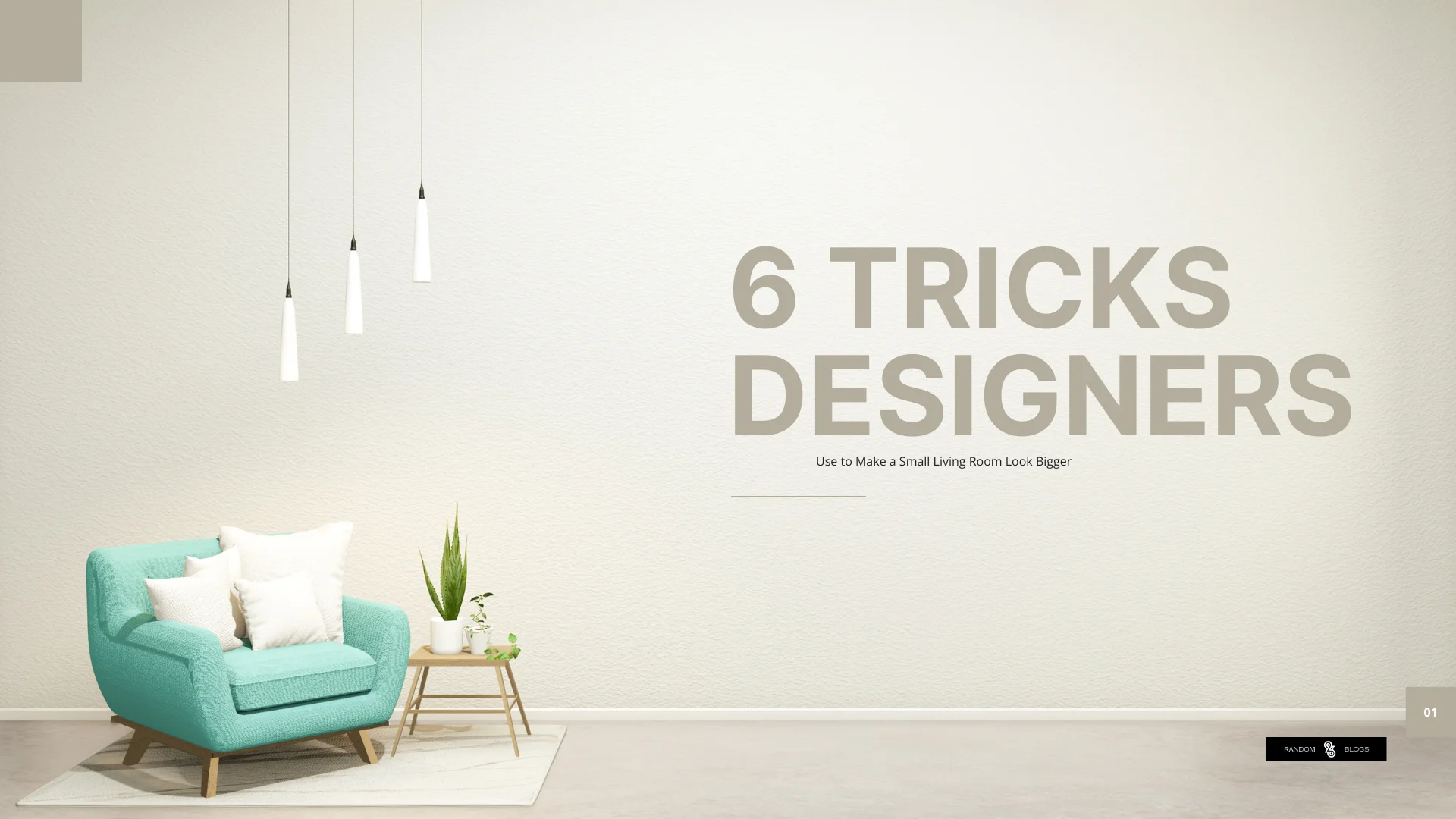
Table of Contents
When it comes to interior design, making a small living room feel spacious can be a real challenge. Whether you’re working with limited square footage or an oddly-shaped space, it’s easy for a small living room to feel cramped and cluttered. Fortunately, there are ways to maximize every inch and create a cozy, inviting environment that doesn’t skimp on style. With a few strategic design choices, you can trick the eye and create the illusion of a much larger living room. Let’s dive into six designer-approved tricks to help make your small living room look and feel bigger.
1. When It Comes to Rug Size, Bigger Is Better
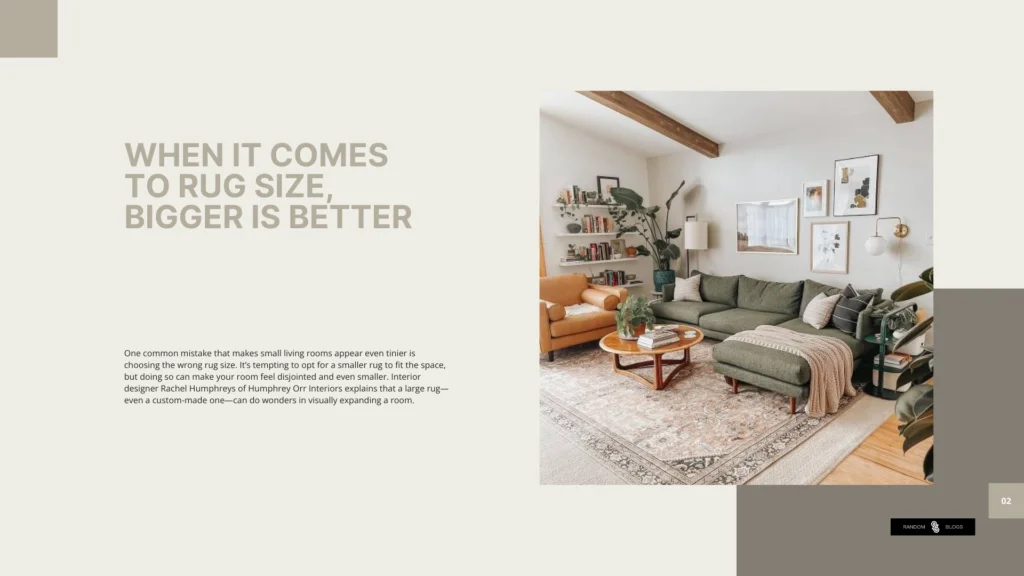
One common mistake that makes small living rooms appear even tinier is choosing the wrong rug size. It’s tempting to opt for a smaller rug to fit the space, but doing so can make your room feel disjointed and even smaller. Interior designer Rachel Humphreys of Humphrey Orr Interiors explains that a large rug—even a custom-made one—can do wonders in visually expanding a room.
“Make sure the rug is the right size for your space,” she advises. “People often only place rugs under the sitting area, which can make the room feel smaller and more cramped. A custom rug with a small wood margin always helps make a space feel larger.”
When choosing a rug for a small living room, aim for one that covers a majority of the floor space, leaving just a small perimeter of flooring exposed. This will anchor your furniture arrangement and make the room feel more cohesive.
2. Hang the Curtains Extra High

Want to make your ceilings look higher and your space feel more open? Consider where you hang your curtains. One of the best tricks for visually expanding a room is to hang curtains higher than the window frame. According to Humphreys, installing curtain rods about two-thirds of the way between the top of the window and the ceiling is a game-changer.
“This will make the ceilings feel higher and the space larger,” she explains. Be sure to measure carefully to avoid ordering the wrong size. Opt for long, flowing drapes that reach from the higher rod placement to the floor. This creates the illusion of added height and gives the room a more airy and spacious feel.
3. Consider Installing Built-Ins for Function and Style
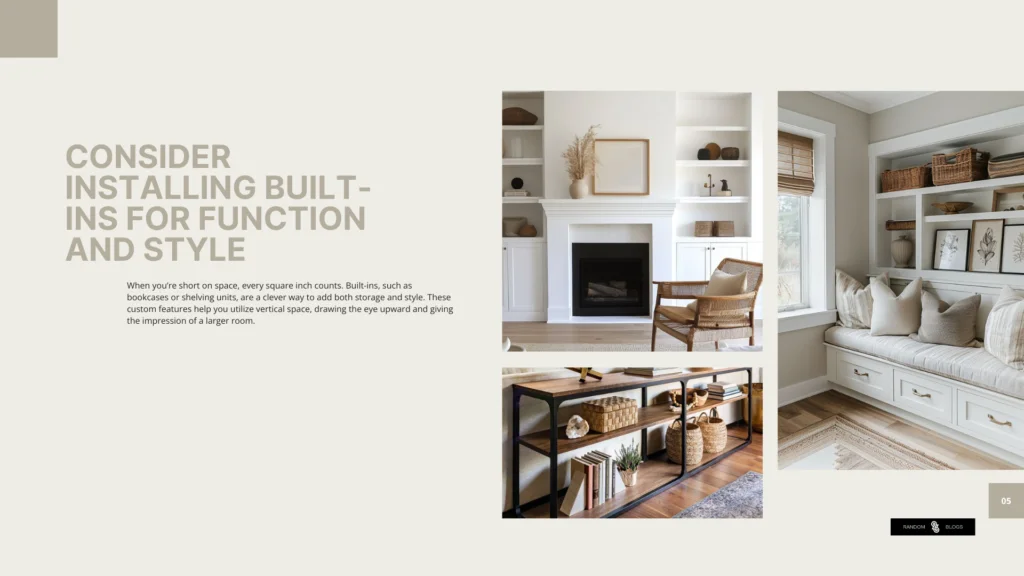
When you’re short on space, every square inch counts. Built-ins, such as bookcases or shelving units, are a clever way to add both storage and style. These custom features help you utilize vertical space, drawing the eye upward and giving the impression of a larger room.
“Built-ins can add another dimension to the space and provide storage to reduce clutter,” says Humphreys. She recommends aligning the top of the built-in with the ceiling to create a grander feel. But built-ins aren’t just about function—they’re an opportunity for design expression. Paint them a bold color or add custom moldings for a unique and polished aesthetic.
With built-ins, you can have both functionality and beauty, which is key when working with small spaces. Less clutter means a more open and inviting space.
4. Add a Large Mirror to Reflect Space and Light
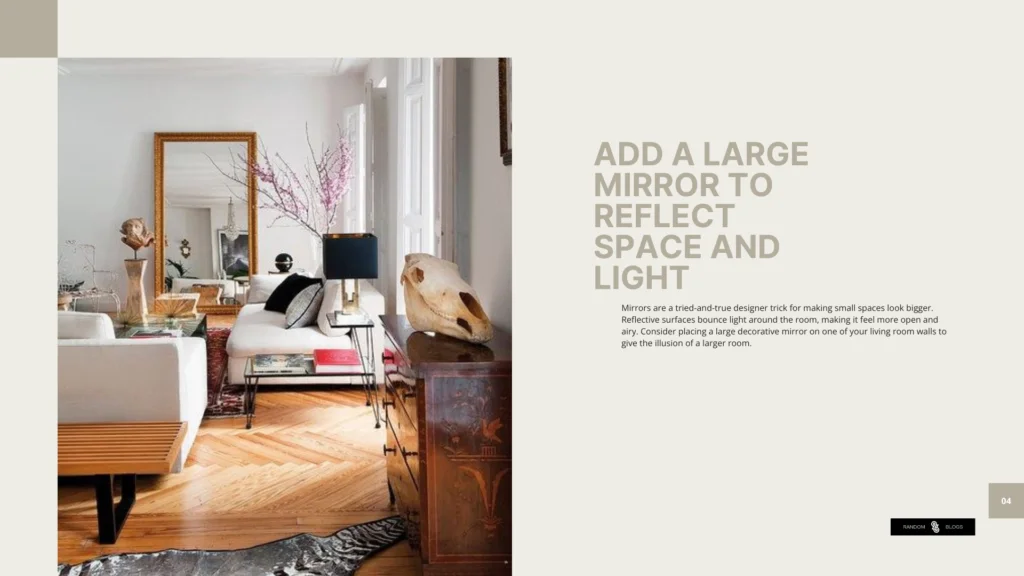
Mirrors are a tried-and-true designer trick for making small spaces look bigger. Reflective surfaces bounce light around the room, making it feel more open and airy. Consider placing a large decorative mirror on one of your living room walls to give the illusion of a larger room.
“Reflective surfaces always help enlarge a space,” shares Humphreys. If you’re not a fan of mirrors, she suggests using highly reflective paint to achieve a similar effect. This type of paint can add a subtle sheen that catches the light, brightening up the room and creating a sense of depth.
The key is to place mirrors or reflective elements where they can catch and reflect natural light. This instantly brightens the room, making it appear bigger than it actually is.
5. Opt for Less Furniture to Prevent Overcrowding
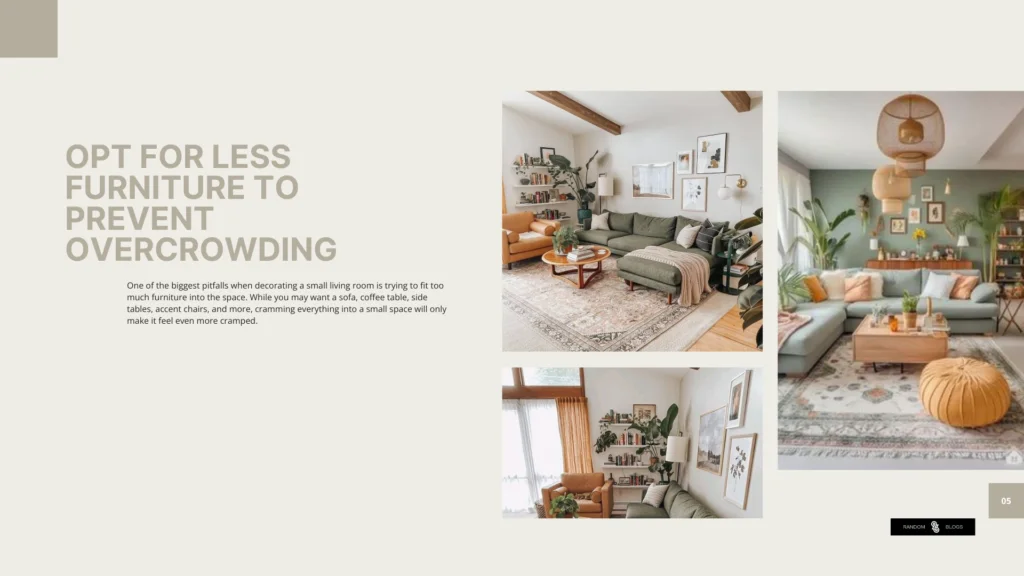
One of the biggest pitfalls when decorating a small living room is trying to fit too much furniture into the space. While you may want a sofa, coffee table, side tables, accent chairs, and more, cramming everything into a small space will only make it feel even more cramped.
“A smaller room might only need a large sofa or sectional, a coffee table, and a chair,” advises Humphreys. “Putting too much furniture in a room can make it feel cramped and cluttered.”
When furnishing a small living room, choose pieces that are multi-functional or have hidden storage, such as a sofa with built-in storage or an ottoman that doubles as a coffee table. Less is more in a small space—by paring down your choices, you’ll be able to create a more open and welcoming atmosphere.
6. Skip the Gallery Wall and Go for Large-Scale Artwork
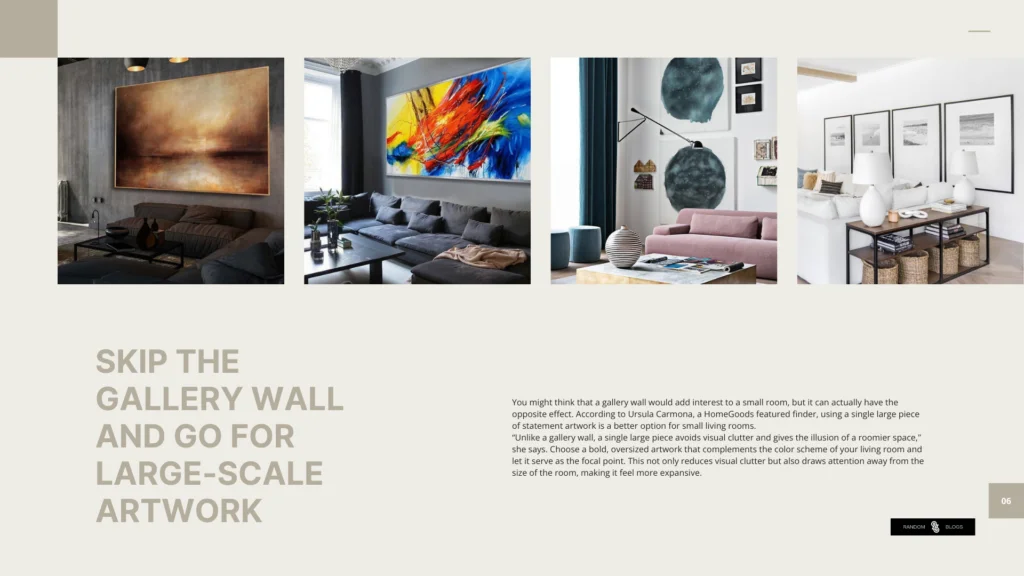
You might think that a gallery wall would add interest to a small room, but it can actually have the opposite effect. According to Ursula Carmona, a HomeGoods featured finder, using a single large piece of statement artwork is a better option for small living rooms.
“Unlike a gallery wall, a single large piece avoids visual clutter and gives the illusion of a roomier space,” she says. Choose a bold, oversized artwork that complements the color scheme of your living room and let it serve as the focal point. This not only reduces visual clutter but also draws attention away from the size of the room, making it feel more expansive.
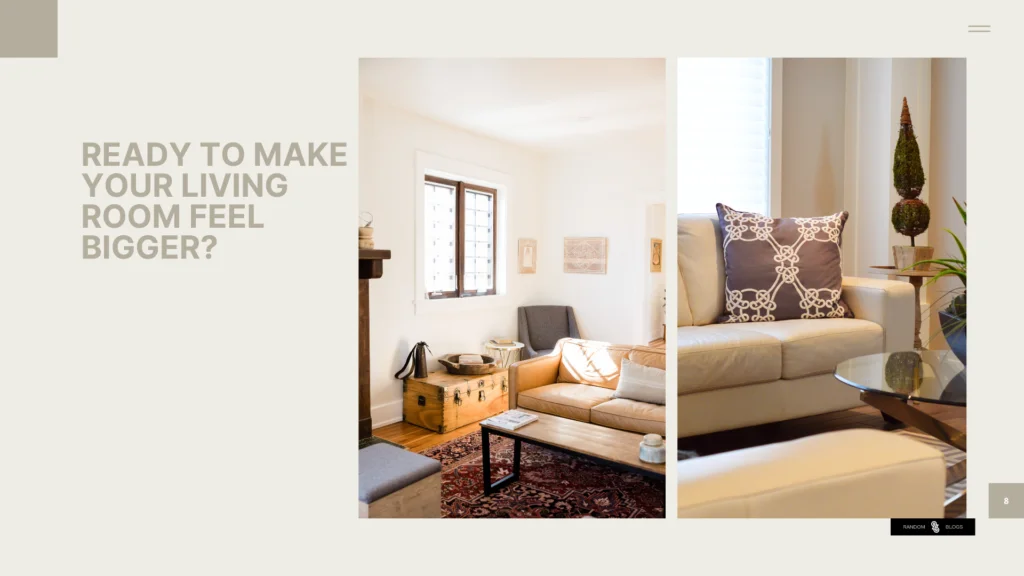
Final Thoughts: Making Small Spaces Feel Spacious
Designing a small living room doesn’t have to mean sacrificing style or functionality. With these six clever design tricks, you can make your small living room look and feel much larger than it is. From choosing the right rug size to adding reflective elements and selecting the perfect artwork, it’s all about creating a sense of openness and flow. Keep in mind that every design choice matters—by maximizing your space strategically, you can transform even the smallest of living rooms into a cozy, welcoming retreat.
Ready to make your living room feel bigger? Try out these tips, and watch your space expand!
Need More Design Inspiration?
Check out our other guides on small space living, including:







1 thought on “6 Tricks Designers Use to Make a Small Living Room Look Bigger”